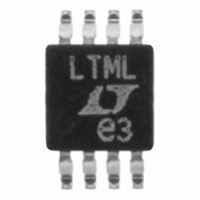LT1962EMS8-2.5#TRPBF Linear Technology, LT1962EMS8-2.5#TRPBF Datasheet - Page 13

LT1962EMS8-2.5#TRPBF
Manufacturer Part Number
LT1962EMS8-2.5#TRPBF
Description
IC LDO REG LOWNOISE 2.5V 8-MSOP
Manufacturer
Linear Technology
Datasheet
1.LT1962EMS8PBF.pdf
(16 pages)
Specifications of LT1962EMS8-2.5#TRPBF
Regulator Topology
Positive Fixed
Voltage - Output
2.5V
Voltage - Input
Up to 20V
Voltage - Dropout (typical)
0.27V @ 300mA
Number Of Regulators
1
Current - Output
300mA
Current - Limit (min)
320mA
Operating Temperature
-40°C ~ 125°C
Mounting Type
Surface Mount
Package / Case
8-MSOP, Micro8™, 8-uMAX, 8-uSOP,
Lead Free Status / RoHS Status
Lead free / RoHS Compliant
Available stocks
Company
Part Number
Manufacturer
Quantity
Price
APPLICATIO S I FOR ATIO
temperature and applied voltage. The most common
dielectrics used are Z5U, Y5V, X5R and X7R. The Z5U and
Y5V dielectrics are good for providing high capacitance in
a small package, but exhibit strong voltage and tempera-
ture coefficients as shown in Figures 4 and 5. When used
with a 5V regulator, a 10 F Y5V capacitor can exhibit an
effective value as low as 1 F to 2 F over the operating
temperature range. The X5R and X7R dielectrics result in
more stable characteristics and are more suitable for use
as the output capacitor. The X7R type has better stability
across temperature, while the X5R is less expensive and
is available in higher values.
Voltage and temperature coefficients are not the only
sources of problems. Some ceramic capacitors have a
piezoelectric response. A piezoelectric device generates
voltage across its terminals due to mechanical stress,
similar to the way a piezoelectric accelerometer or micro-
Figure 5. Ceramic Capacitor Temperature Characteristics
Figure 4. Ceramic Capacitor DC Bias Characteristics
–100
–100
–20
–40
–60
–80
–20
–40
–60
–80
20
40
20
0
0
–50
0
BOTH CAPACITORS ARE 16V,
1210 CASE SIZE, 10 F
–25
2
U
4
DC BIAS VOLTAGE (V)
0
TEMPERATURE ( C)
BOTH CAPACITORS ARE 16V,
1210 CASE SIZE, 10 F
6
25
U
8
Y5V
X5R
50
10
Y5V
75
12
W
X5R
100
14
1962 F05
1962 F04
125
16
U
phone works. For a ceramic capacitor the stress can be
induced by vibrations in the system or thermal transients.
The resulting voltages produced can cause appreciable
amounts of noise, especially when a ceramic capacitor is
used for noise bypassing. A ceramic capacitor produced
Figure 6’s trace in response to light tapping from a pencil.
Similar vibration induced behavior can masquerade as
increased output voltage noise.
Thermal Considerations
The power handling capability of the device will be limited
by the maximum rated junction temperature (125 C). The
power dissipated by the device will be made up of two
components:
1. Output current multiplied by the input/output voltage
2. GND pin current multiplied by the input voltage:
The GND pin current can be found by examining the GND
Pin Current curves in the Typical Performance Character-
istics. Power dissipation will be equal to the sum of the two
components listed above.
The LT1962 series regulators have internal thermal limit-
ing designed to protect the device during overload condi-
tions. For continuous normal conditions, the maximum
junction temperature rating of 125 C must not be
exceeded. It is important to give careful consideration to
all sources of thermal resistance from junction to ambient.
Additional heat sources mounted nearby must also be
considered.
Figure 6. Noise Resulting from Tapping on a Ceramic Capacitor
500 V/DIV
differential: (I
(I
GND
V
OUT
)(V
IN
LT1962-5
C
C
I
LOAD
OUT
BYP
).
= 10 F
= 0.01 f
= 100mA
OUT
)(V
IN
100ms/DIV
– V
OUT
), and
LT1962 Series
1962 F06
13








